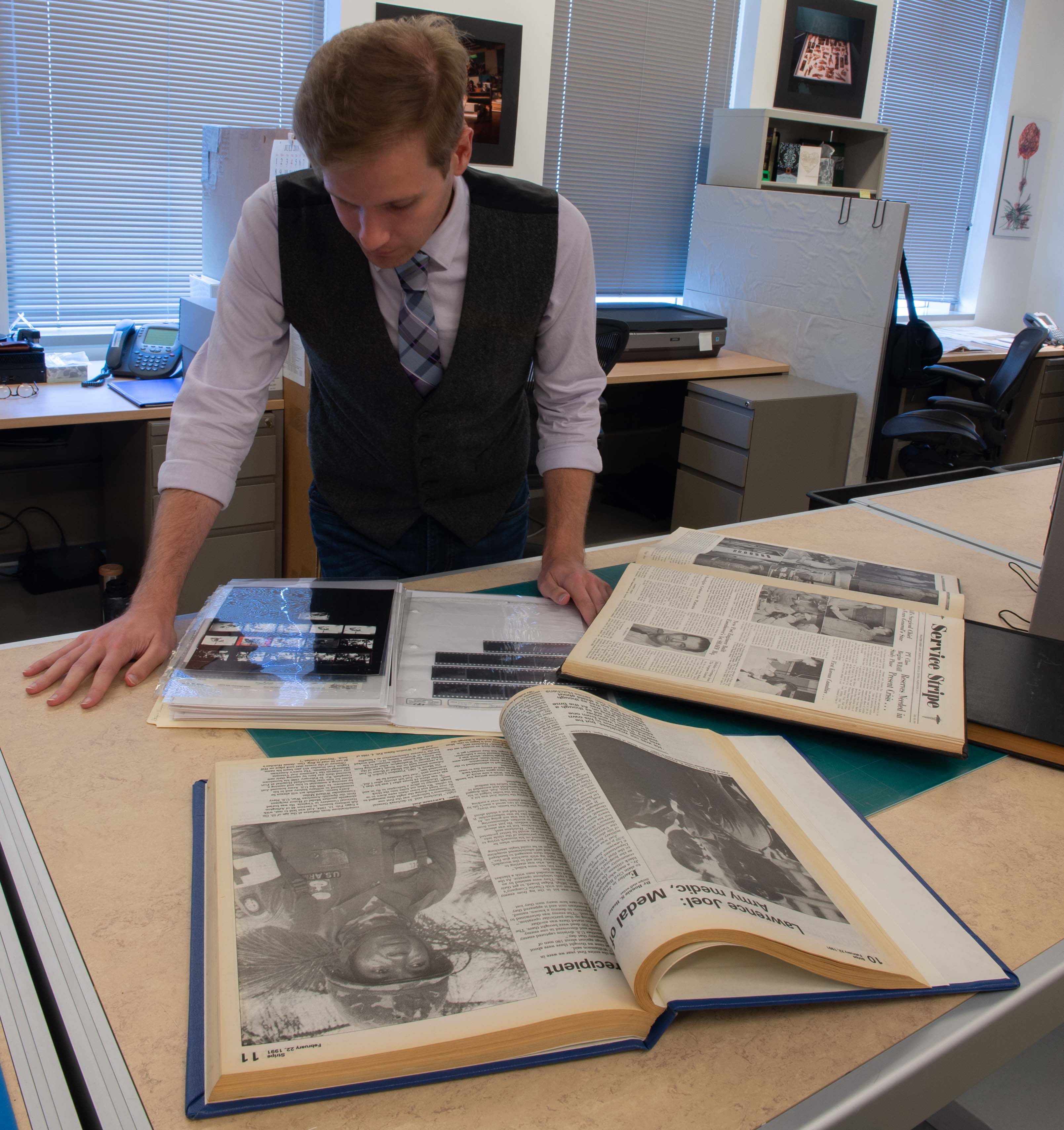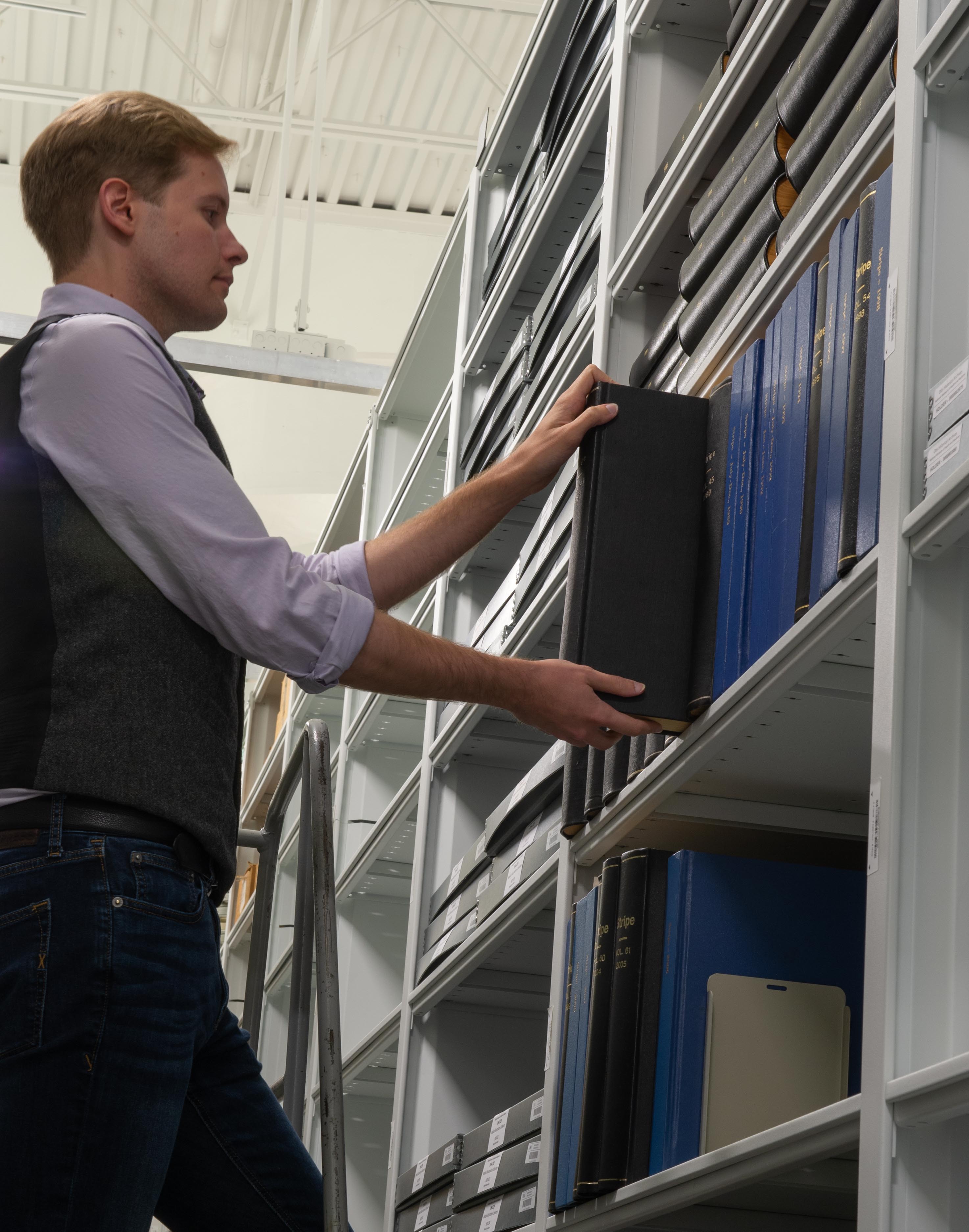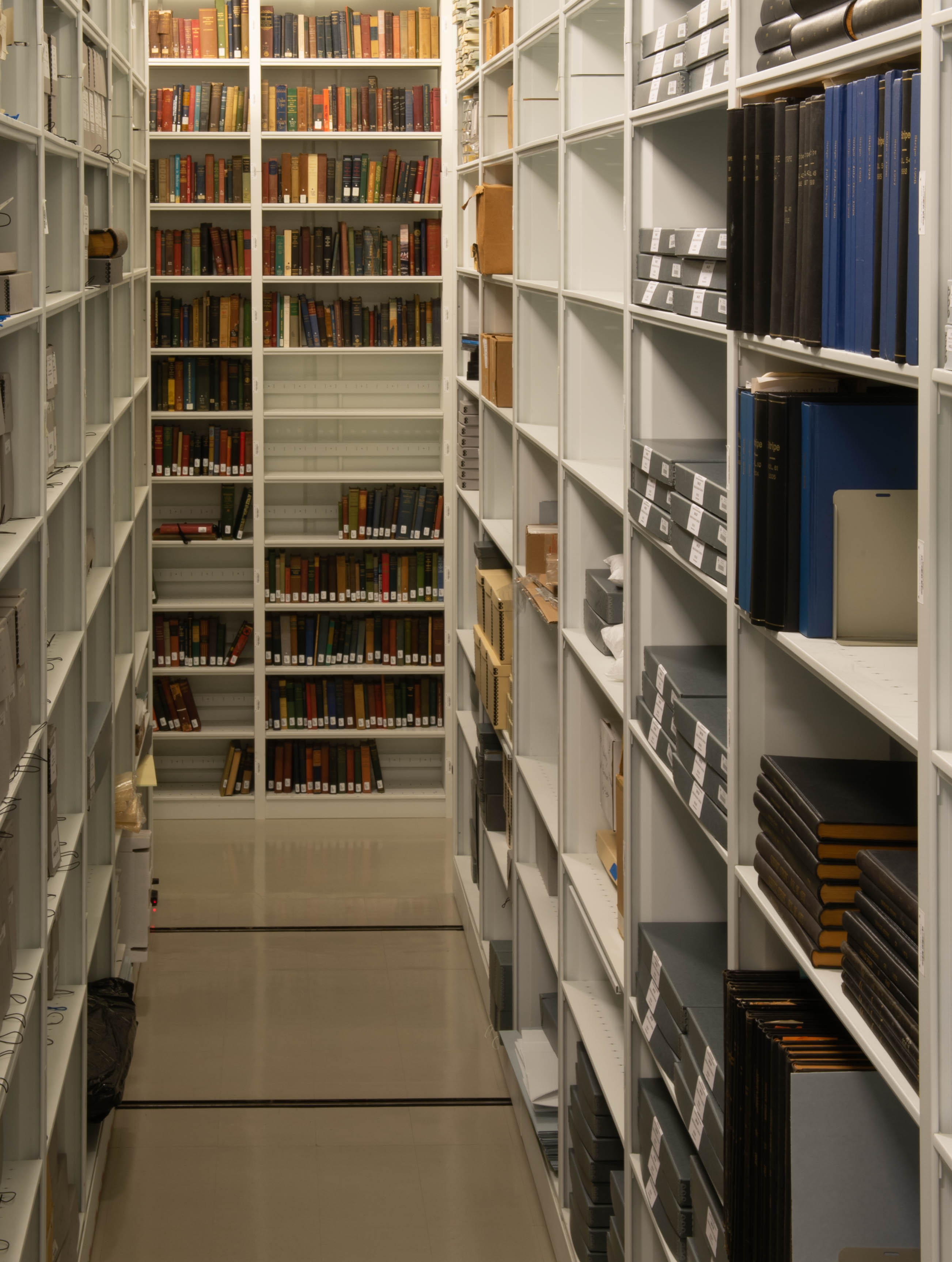Military Medical Museum Archives Acquires Historic Walter Reed Hospital Newspaper Series Stripe
By Lauren Bigge
NMHM Public Affairs Coordinator
The National Museum of Health and Medicine (NMHM) acquired a historically-significant newspaper collection this spring that documented the day-to-day life of the former Walter Reed Army Medical Center from the 1940s to the hospital's closure in 2011.
One-hundred and fifty-one volumes of the Stripe weekly staff newspaper collection – uniquely valuable as historical records from the world-renowned military hospital – were transferred to NMHM's Otis Historical Archives (OHA) from Walter Reed National Military Medical Center in Bethesda, Md. in May 2018. The acquisition includes 64 bound volumes of the Service Stripe and 87 bound volumes of the Stripe.
Originally called Service Stripe, the newspaper covered the people and events at the former military hospital until the paper ceased publication in August 2011, when the installation and hospital complex were closed in response to a recommendation by the Base Realignment and Closure Commission in 2005. The hospital integrated with the National Naval Medical Center in Bethesda, Md., forming Walter Reed National Military Medical Center.
NMHM, a Department of Defense museum and division of the Defense Health Agency Research and Development Directorate, has managed a collection of Stripe newspapers dating from the 1980s through August 2011 — more than 1000 issues. This new acquisition of Service Stripe from 1950-1975 and Stripe from 1976-1987, 1989-2001, and 2003-2005, may include the only copies of certain historic editions from the newspaper's entire run.
"It appears that no library or military history organization has a complete series of the Stripe," archivist Laura Cutter said. Cutter assured the Walter Reed Bethesda staff that the museum's archives will make the newspaper archive available to the hospital staff, researchers and the public, while preserving the original editions, since newsprint is acidic and fragile.
"It was really important that this end up somewhere where it would be preserved and people would have access to it," Cutter said.
Dr. John Pierce of the Walter Reed Society advocated strongly for NMHM to acquire the Stripe precisely because the group's goal is preservation of the legacy of both the late U.S. Army physician Major Walter Reed and his namesake hospital. Cutter noted that Pierce in particular has been a great supporter of preserving Walter Reed Army Medical Center's place in the history of military medicine.
"The NMHM already has an extensive Walter Reed General Hospital and Walter Reed Army Medical Center archive and the presence of the Stripe just complements these holdings," Dr. Pierce said. "The volumes of [Walter Reed newspaper produced by patients for patients called] The Come-Back from WRGH during and after World War I are in the NMHM and it would only be natural for the Stripe to be combined with them."
Bernard Little, former Stripe editor, agreed. Recalling how The Come-Back historical issues were turned over to the NMHM for proper preservation, Little said, "Turning over the bounded issues of The Come-Back, Service Stripe and Stripe newspapers to the National Museum of Health and Medicine just seemed to simply be the right thing to do, not only because of the renowned reputation of the NMHM, its historical significance in military medicine and capabilities in preservation and storage, but also because of the very close ties between the museum and Walter Reed Army Medical Center. The two historic organizations shared the same campus for a number of years."
The Stripe includes articles with many photographs from the Korean War, Vietnam War, wars in the Middle East involving American service members, profiles of Walter Reed employees, and change of command ceremonies. The newspaper reports the medical center's transformation into a world-class military hospital and research facility.
Cutter said that while the newspaper as a resource may not be the most glamourous research asset, it is often incredibly valuable when the articles or photographs reveal details about people and events that fill in gaps in other records. For example, the specific date of an individual's promotion may be found in the Stripe, while an individual's promotion record may only have the date the paperwork was created. "You would be amazed at how hard that [information] is to find," she said. "In the Walter Reed Archives collection, we manage many photograph collections that include the photographs published in the Stripe," Cutter said
Trenton Streck-Havill, assistant archivist, recently completed a project documenting film negatives from Walter Reed Army Medical Center's Archives photographs, which served as source photographs for the Stripe. Streck-Havill said archives staff will now work through each Stripe volume to create a general inventory, specifying how many copies they have of each individual volume and which volumes may be missing. "It's the process of cataloging the collection," Streck-Havill explained. "Once that's finished, we will begin interlacing the Stripe collection with the other collections to develop a subject guide, which will include a finding aid that spans the various archival collections, and then into other collections managed by the museum."
The subject guide will then be published on the NMHM website, where other subject guides can currently be found. That step is important for the public because it will help individuals and researchers to easily decide what content they would like to obtain from the Stripe.
"We have already had a few [research] requests, where we have used Stripe to find that information," Cutter said. "We had other [requests] come in; people have asked for editions of the Stripe that we didn't have, so we weren't able to help them. Now we will be able to. Having it here is amazing. We're building up really great, well-rounded history collections about the historic Walter Reed facility that I think will be incredibly beneficial to the research community. It's an honor to be able to manage this collection."
Learn more about NMHM online at www.medicalmuseum.mil.






